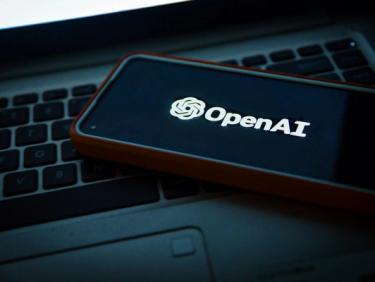Insight6 min read
Chat to checkout is here... are you ready?
Wed Oct 01 2025 | Claire Taylor

- Insight
- Web & eCommerce
- Shopify Plus
- IDHL Labs
Tags
Think about the difference between a waiter who hands you the same laminated menu as every other customer, and one who remembers you don’t eat meat, suggests the wine you liked last time, and even knows your dad’s birthday is coming up. One is functional. The other is contextual. One gives you choice. The other gives you relevance.
That’s the shift now underway in commerce. OpenAI’s announcement of Instant Checkout in ChatGPT isn’t about inventing one-click shopping – Amazon has been chipping away at that for years. What’s different is the context and the unpredictability. Ask for “gifts for my dad” on Amazon and you’ll get the same ’old man’ mugs and generic golf gear as everyone else. Ask the question in ChatGPT and you may get different results each time, shaped by prior conversations, subtle signals, or simply the non-deterministic nature of AI. That can feel powerful, personal, and surprising.
For brands, it’s a step forward on a familiar trend: discovery and purchase collapsing into the same moment. The question is whether you’re ready to show up in that moment, consistently and credibly.
What this actually means
In truth, this development has long been discussed and is more about behaviour than technology and tools. People will continue to use Google to search and browse, but assistants are joining the mix. Some journeys will begin and end inside an AI conversation; others won’t. When that happens, brands will have less time to persuade and less space to explain. Product information, delivery promises and returns will need to be visible, structured and clear so an assistant can read them, reason about them, and recommend you. Your analytics will also need to recognise orders that never touch a traditional basket. None of this is theoretical.
How do you respond?
Preparing our clients for “answer readiness” is nothing new. It’s no longer enough to be optimised for search engines alone; you also need to be optimised for the way assistants and platforms retrieve and present information. That means treating product data, policy details, and content structure as assets in their own right: accurate, consistent, and both machine-readable and human-friendly. The goal has always been the same: when a customer asks a question, whether to a search engine, a marketplace or an assistant, our clients’ products and promises are the ones that get shown.
This announcement is also an exciting moment for Shopify. It positions the platform at the forefront of these shifts – working with OpenAI and Stripe to bring conversational checkout into the masses. The protocol is being designed to fit with the systems merchants already use, meaning adoption is a matter of readiness rather than complete reinvention. For those on Stripe, the path will be immediate, and for others, there will be delegated flows that avoid wholesale changes.
As the UK’s largest Shopify Platinum Partner, IDHL is more than an observer. We have direct access to Shopify’s roadmap, early visibility of enablement, and a voice in the conversations shaping best practice. For our clients, that means two things: clarity on what’s coming, and playbooks that translate it into action. Adoption should feel like an upgrade, not an upheaval, and we’re already in discussions with Shopify to ensure that’s the case.
Staying ahead of the curve
Right now, the priority isn’t adopting new tools, it’s making sure your business is prepared for the way commerce is evolving. That comes down to three C’s: Clarity, consistency and control.
- Clarity: Your products and promises need to be unambiguous. If an assistant can’t understand what you sell, how you deliver, or how you manage returns, customers won’t either.
- Consistency: Discovery won’t be limited to your website. Assistants, marketplaces and search engines will all pull from the same information. If that information is fragmented or out of sync, it breaks trust instantly.
- Control: Not every product or journey belongs inside a chat. High-consideration purchases will still need richer experiences. Readiness means knowing where conversational checkout makes sense, and where it doesn’t.
Taken together, these principles let you move quickly when the switch flips. You don’t need to rebuild your platform. You need to be confident that when assistants become a more common path to purchase, your brand shows up clearly, consistently and on its own terms.
A way forward
Commerce in chat will not replace your website, so you should view it as just another path to purchase. Some brands will move first because their products lend themselves to quick decisions. Others will wait, watch and then switch it on when the time is right. Our role is to make sure that when conversational checkout reaches your category, it works the first time your customers encounter it.
If you would like a short readiness review or to line up a pilot as Shopify enablement rolls out, talk to our IDHL team.


